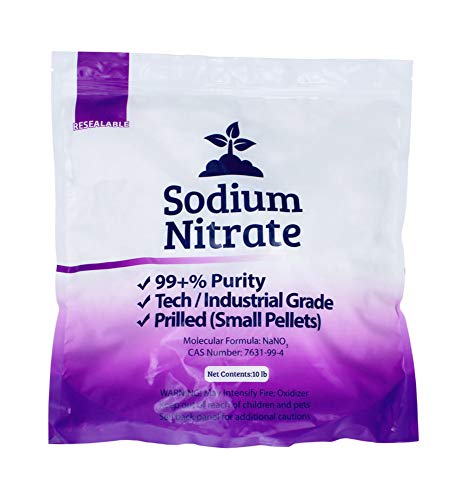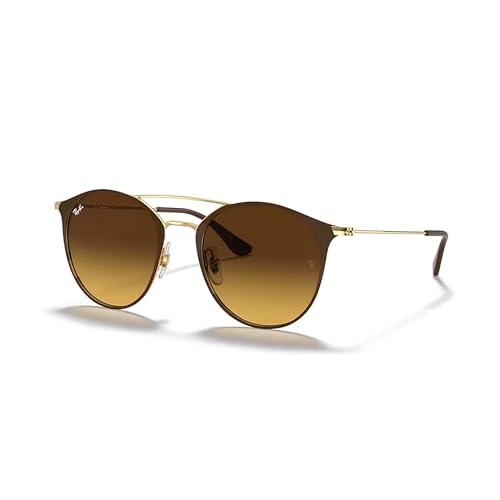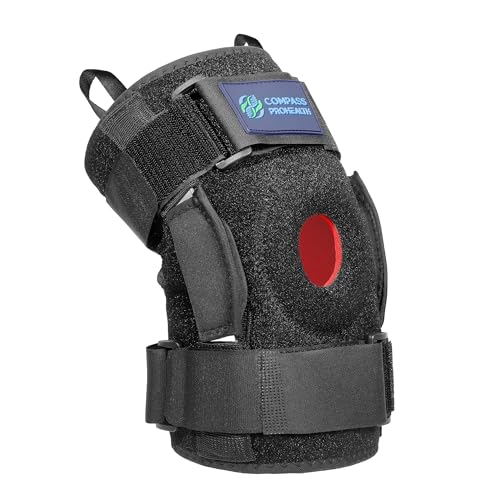Hello. Something went wrong with my AR precipitation with oxalic acid. AR was filtered, I have added little bit of urea to remove nitric, diluted it 50 50 with tap water, and added dehydrated oxalic acid, diluted in hot water. Heated everything until boiling, but all i've got is light green color precipitation on the bottom.. Any sign of gold.. Help will be highly appreciated. Thanks
You are using an out of date browser. It may not display this or other websites correctly.
You should upgrade or use an alternative browser.
You should upgrade or use an alternative browser.
Oxalic acid precipitation
- Thread starter kipselis
- Start date

Help Support Gold Refining Forum:
This site may earn a commission from merchant affiliate
links, including eBay, Amazon, and others.
Urea is not ideal. You probably have too much free nitric. Also, you need to heat the solution to 90 Centigrade before it will work. Add the requisite amount of oxalic acid, then start adding ammonia until it all drops out.
Lou
Lou
Hello,
What metals do you have in your solution? I used oxalic acid method in refining process. After dissolving gold 99% with AR I add sodium carbonate to slightly basic pH and then add oxalic acid keeping the mixture hot for 2 hours. If the solution is still pale yellow and no gases evolve i add some more acid. Gold sponge is then filtered, soaked 3 times with hot water, acetone and then dried and melted into button. Other metals, especially in high concentrations can make solid oxalates that precipitate out of the solution. Light green precipitate is probably copper or nickel oxalate (carbonate?).
What metals do you have in your solution? I used oxalic acid method in refining process. After dissolving gold 99% with AR I add sodium carbonate to slightly basic pH and then add oxalic acid keeping the mixture hot for 2 hours. If the solution is still pale yellow and no gases evolve i add some more acid. Gold sponge is then filtered, soaked 3 times with hot water, acetone and then dried and melted into button. Other metals, especially in high concentrations can make solid oxalates that precipitate out of the solution. Light green precipitate is probably copper or nickel oxalate (carbonate?).
Hello, Mr Ander. I definitely have copper and nickel in the solution, because it was different types of scrap in AR, not just gold.. But I'm wondering, why gold didn't participate together with that copper and nickel oxalate..I have looked at solution after 2 days. Now I have some colorless crystals over green precipitation,what is oxalic acid, I guess. I guess I need to heat the solution gently, untill these crystals are gone, then filter these green-blue precipitation out, add some ammonia to the solution and heat it. What do you think? Thanks
Yes, I think filtering off precipitate is a good idea. There is no need of using dehydrated oxalic acid, crystalic form can be used as is. Best way to recovery is to use SMB especially with urea, then oxalate method for purification. If you have added too much nitric acid just use more SMB. You can know maximum SMB usage by calculating reaction of nitric acid with SMB. SMB gives sulfuric acid and sodium sulfate, nitric acid reduces do nitrogen dioxide thus molar ratio SMB:NA is 1:4. Na2S2O5+4HNO3->Na2SO4+H2SO4+4NO2+H2O.
Questions to Lou:
First of all thanks for your diligence in answering questions and providing insightful information.
1. After you add the proper amount of oxalic, please tell us how long do you boil the solution and how long do you let the solution settle?
(I recently used the oxalic acid procedure to precipitate the gold. I may have not put in enough ammonia. I was very pleased with the high quality of the gold precipitated. Under the microscope the 'velvet looking rug' of gold on the bottom of the beaker had beautiful little gold crystals after one day of precipitation. I washed, dried and melted the gold and it was beautiful. I put the beaker of the used oxalic acid & AR solution aside and did not throw it away. To my surprise the next day there was another precipitation of gold. So I boiled the mixture again. I tested the solution with stanneous solution and got no reaction, but the next day there was another precipitation of gold [I believe]. )
2. Why would stanneous solution not react with the gold in oxalic acid? (am I wrong?)
3. What color should the finished solution of oxalic acid and AR be? Yellow, light yellow, almost colorless?
4. If the solution does not precipitate fast enough, will adding more ammonia help?
5. From what I saw the most important thing in the oxalic acid procedure is boiling. Is that correct?
6. Also, I have read that others say 500 ml of water to 1 oz of oxalic acid and others say 1000 ml of water to 1 oz oxalic acid. What do you think is correct?
Thanks
First of all thanks for your diligence in answering questions and providing insightful information.
Lou said:Urea is not ideal. You probably have too much free nitric. Also, you need to heat the solution to 90 Centigrade before it will work. Add the requisite amount of oxalic acid, then start adding ammonia until it all drops out.
Lou
1. After you add the proper amount of oxalic, please tell us how long do you boil the solution and how long do you let the solution settle?
(I recently used the oxalic acid procedure to precipitate the gold. I may have not put in enough ammonia. I was very pleased with the high quality of the gold precipitated. Under the microscope the 'velvet looking rug' of gold on the bottom of the beaker had beautiful little gold crystals after one day of precipitation. I washed, dried and melted the gold and it was beautiful. I put the beaker of the used oxalic acid & AR solution aside and did not throw it away. To my surprise the next day there was another precipitation of gold. So I boiled the mixture again. I tested the solution with stanneous solution and got no reaction, but the next day there was another precipitation of gold [I believe]. )
2. Why would stanneous solution not react with the gold in oxalic acid? (am I wrong?)
3. What color should the finished solution of oxalic acid and AR be? Yellow, light yellow, almost colorless?
4. If the solution does not precipitate fast enough, will adding more ammonia help?
5. From what I saw the most important thing in the oxalic acid procedure is boiling. Is that correct?
6. Also, I have read that others say 500 ml of water to 1 oz of oxalic acid and others say 1000 ml of water to 1 oz oxalic acid. What do you think is correct?
Thanks

$25.99 ($3.71 / Count)
WORKPRO 7-Piece Jewelers Pliers Set, Jewelry Making Tools Kit with Easy Carrying Pouch (Blue)
GreatStar Tools

$19.99
$24.99
PAXCOO Jewelry Making Supplies Kit with Jewelry Tools, Jewelry Wires and Jewelry Findings for Jewelry Repair and Beading
Paxcoo Direct

$83.80
$115.00
Petroleum Refining: Technology, Economics, and Markets, Sixth Edition
Woodville Books

$85.86
$171.00
Catalysis in the Refining of Fischer-Tropsch Syncrude (Catalysis Series, Volume 4)
Basi6 International

$159.99
5000ml Beaker, Low Form Griffin, Borosilicate 3.3 Glass, Double Scale, Graduated, Karter Scientific 247R8 (Case of 4)
Lake Charles Manufacturing

$7.49 ($0.15 / Count)
$7.99 ($0.16 / Count)
Beauticom 3g/3ml (0.1 Fl Oz) Round Clear Plastic Jars with Round Top Lids for Creams, Lotions, Powders, Glitters, and more... (Color: Clear Lid, Quantity: 50 Pieces)
Beauticom

$223.49 ($0.06 / Ounce)
50 lb Sodium Nitrate Fertilizer 99+% Pure Chile Saltpeter Gold Metal Refining Industrial Grade Glass Pottery Enamels
Duda Energy
1. After you add the proper amount of oxalic, please tell us how long do you boil the solution and how long do you let the solution settle?
I'd boil for 2 to 2.5 h and allow it to settle overnight. You can add an organic flocculent if it isn't settling fast enough.
(I recently used the oxalic acid procedure to precipitate the gold. I may have not put in enough ammonia. I was very pleased with the high quality of the gold precipitated. Under the microscope the 'velvet looking rug' of gold on the bottom of the beaker had beautiful little gold crystals after one day of precipitation. I washed, dried and melted the gold and it was beautiful. I put the beaker of the used oxalic acid & AR solution aside and did not throw it away. To my surprise the next day there was another precipitation of gold. So I boiled the mixture again. I tested the solution with stanneous solution and got no reaction, but the next day there was another precipitation of gold [I believe]. )
2. Why would stanneous solution not react with the gold in oxalic acid? (am I wrong?)
It should react. Likely what is happening is the gold is taking a while to precipitate and there is no free Au(III) in solution--you can't test with stannous for Au(0).
3. What color should the finished solution of oxalic acid and AR be? Yellow, light yellow, almost colorless?
It should NOT be an AR solution, that's a problem right there. Remove the nitric and it will precipitate much quicker. If you start from gold containing mostly silver and other white metals in solution, it will be colorless. If you start from a solution containing iron, it may be yellow--green (if you know there is much iron GO VERY EASY ON THE AMMONIA or various iron oxyhydroxides will precipitate with your gold and you will have to start over). If you start from a solution containing nickel, it'll probably be an apple green. Copper will be blue.
4. If the solution does not precipitate fast enough, will adding more ammonia help?
To a point, yes. First add the oxalic, boil, you should see CO2 given off. Then add concentrated ammonia (first quite a bit, maybe 30 mL at a time) then go slowly.
5. From what I saw the most important thing in the oxalic acid procedure is boiling. Is that correct?
Eh, boiling is not really entirely necessary. Boiling helps the little nanometers-sized pieces of gold stick together (ripening) and grow big enough that they can overcome buoyancy in solution. It's called agglomeration.
6. Also, I have read that others say 500 ml of water to 1 oz of oxalic acid and others say 1000 ml of water to 1 oz oxalic acid. What do you think is correct?
I think both of those are very wrong. That much solution volume is EXACTLY why it's taking a long time to settle. Picture it this way: if you have a concentrated gold solution and you add oxalic, the reduction will begin much more quickly and nucleation as well (because both concentration of reductant and oxidant are high). If you're in it for speed and quick precipitation and more than acceptable quality, do it concentrated. If you're in it for the long haul and want it to be very pure, go ahead and use a huge solution volume--it will decrease the liklihood of drag down and decrease the overall concentration of contaminants in the solution. Frankly, I would measure out what I think I need of the oxalic acid dihydrate, then add a 5% excess and add it in by the spatula with very good stirring.
Just be careful because it tends to fizzle quite a bit because it turns into carbon dioxide. (HO2C-CO2H ---> 2CO2 + H2O).
I'd boil for 2 to 2.5 h and allow it to settle overnight. You can add an organic flocculent if it isn't settling fast enough.
(I recently used the oxalic acid procedure to precipitate the gold. I may have not put in enough ammonia. I was very pleased with the high quality of the gold precipitated. Under the microscope the 'velvet looking rug' of gold on the bottom of the beaker had beautiful little gold crystals after one day of precipitation. I washed, dried and melted the gold and it was beautiful. I put the beaker of the used oxalic acid & AR solution aside and did not throw it away. To my surprise the next day there was another precipitation of gold. So I boiled the mixture again. I tested the solution with stanneous solution and got no reaction, but the next day there was another precipitation of gold [I believe]. )
2. Why would stanneous solution not react with the gold in oxalic acid? (am I wrong?)
It should react. Likely what is happening is the gold is taking a while to precipitate and there is no free Au(III) in solution--you can't test with stannous for Au(0).
3. What color should the finished solution of oxalic acid and AR be? Yellow, light yellow, almost colorless?
It should NOT be an AR solution, that's a problem right there. Remove the nitric and it will precipitate much quicker. If you start from gold containing mostly silver and other white metals in solution, it will be colorless. If you start from a solution containing iron, it may be yellow--green (if you know there is much iron GO VERY EASY ON THE AMMONIA or various iron oxyhydroxides will precipitate with your gold and you will have to start over). If you start from a solution containing nickel, it'll probably be an apple green. Copper will be blue.
4. If the solution does not precipitate fast enough, will adding more ammonia help?
To a point, yes. First add the oxalic, boil, you should see CO2 given off. Then add concentrated ammonia (first quite a bit, maybe 30 mL at a time) then go slowly.
5. From what I saw the most important thing in the oxalic acid procedure is boiling. Is that correct?
Eh, boiling is not really entirely necessary. Boiling helps the little nanometers-sized pieces of gold stick together (ripening) and grow big enough that they can overcome buoyancy in solution. It's called agglomeration.
6. Also, I have read that others say 500 ml of water to 1 oz of oxalic acid and others say 1000 ml of water to 1 oz oxalic acid. What do you think is correct?
I think both of those are very wrong. That much solution volume is EXACTLY why it's taking a long time to settle. Picture it this way: if you have a concentrated gold solution and you add oxalic, the reduction will begin much more quickly and nucleation as well (because both concentration of reductant and oxidant are high). If you're in it for speed and quick precipitation and more than acceptable quality, do it concentrated. If you're in it for the long haul and want it to be very pure, go ahead and use a huge solution volume--it will decrease the liklihood of drag down and decrease the overall concentration of contaminants in the solution. Frankly, I would measure out what I think I need of the oxalic acid dihydrate, then add a 5% excess and add it in by the spatula with very good stirring.
Just be careful because it tends to fizzle quite a bit because it turns into carbon dioxide. (HO2C-CO2H ---> 2CO2 + H2O).


































































